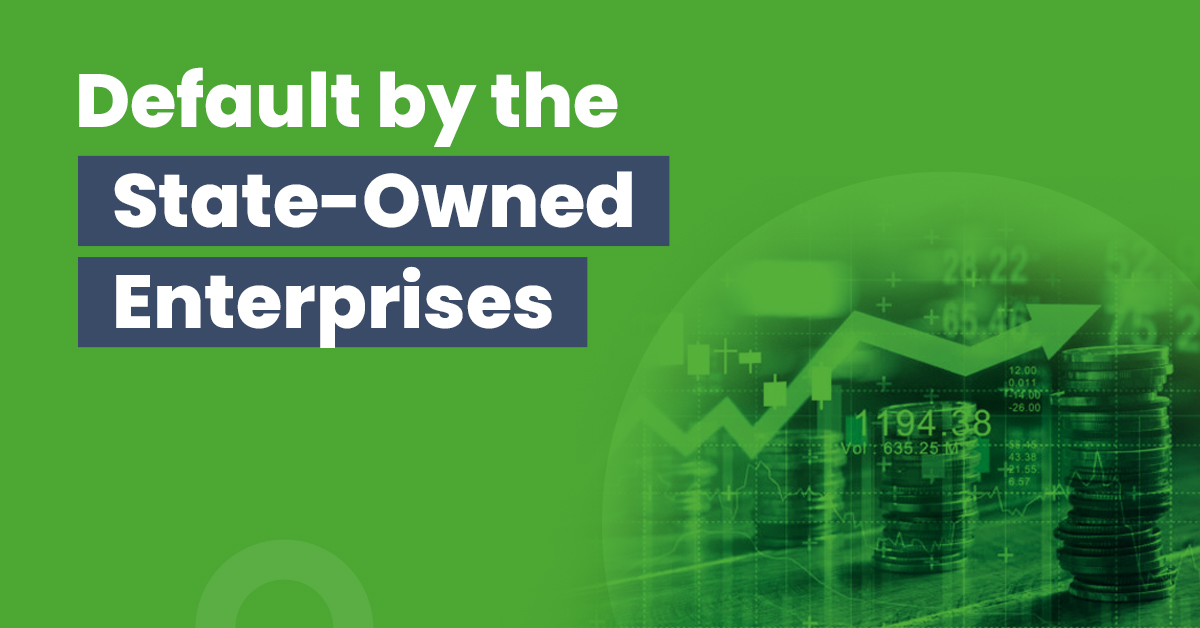Default by the State-Owned Enterprises in India


Historically, the debt market has seen default from state-owned enterprises (SOE) in India. Let’s try to understand these companies and their issuances:-
In this article, we will talk about the instances of default in state-owned companies.
State-owned companies are constitutional bodies formed by the central or State government to participate in commercial activities. These enterprises operate in different sectors of the economy, including power, mining, transport, housing, and the financial sector.
The central or State governments may entirely or partially own these companies. Most companies operate in an industry where the sources are abundant or where public welfare can be done. Examples include oil companies, electricity generation and distribution companies (DISCOM), transportation etc.
Since these companies mostly work for the welfare of the citizens, they might have to provide services or goods below the cost. This ultimately leads to losses or deficits.
To provide for these losses or to fund a project, these companies either take the help of the central or State governments or borrow in the form of term loans or debentures from the capital markets.
Particularly DISCOM and transportation companies are higher default risk companies as these companies generally have high operating costs, which are not met by the revenues resulting in substantial losses, and state governments have to continuously fund them owing to the essentiality of these sectors for the general public.
Instances of Default by the State-Owned Enterprises
While few of these bonds issued have guarantees from the state government, the rest don’t. The bonds guaranteed by the state government are called State Guaranteed Bonds (SGBs)
However, despite the guarantee of the state government, these SOEs have defaulted in the past.
The default instances were primarily seen in the early 2000s when the following state-owned entities have defaulted on their bonds:-
- Gujrat State Finance Corporation
- Gujrat Industrial Investment
- Orissa State Finance Corporation
- Bihar State Financial Corporation
- Bihar State Road Transport Corporation.
- Bihar Electricity Board Corporation
- Assam State Electricity Board
- UP Financial Corporation
- MP State Financial Corporation.
- Madhya Pradesh State Electricity Board
A lot of state-owned enterprises (SOE) have, apart from bonds, also defaulted on their term loans taken from financial institutions.
Recently, In September 2019, the rating agency ICRA downgraded the term loan rating of Bengaluru Metropolitan Transport Corp (BMTC) due to delays and irregularities in servicing long-term loans by the state-owned public carrier despite being a state government entity. The agency downgraded its rating on BMTC to default from ICRA B stable. (link to the rating rationale). This bond, however, was not guaranteed by the Karnataka government.
Understanding the Risk of these Bonds
Since we have discussed the instances of default in state-owned enterprises, it is very important to understand the risk of these bonds.
Credit Risk
To analyse the credit risk, we first must understand if the state government guarantees the bond. If the state government guarantees the bond, understanding the financial health of the State is also essential before deciding to invest in these bonds.
E.g., a bond issued by the state-owned enterprise (SOE) of a developed state will have less probability of default than the bonds issued by the SOE of a developing state.
As per the RBI Report on the state finances, the top 5 most indebted states are Punjab, Rajasthan, Kerala, West Bengal and Bihar as measured by the debt to gross state domestic product (GSDP) ratio. The ratio may also increase in future in case of any macroeconomic shock. One should be cautious about investing in the debt securities issued by these states.
Further, if you want to invest in these bonds, you should also understand the structure and terms of repayment. The mere guarantee of the state government might not be enough for the timely repayment of the bonds. To reduce the risk of the state government not honouring the guarantee, To reduce the risk of default in some of the bond issuances, the company’s cash flows are protected by the escrow mechanism, where the inflows of the SOE will be first used for the repayment to the bondholders.
If the state government does not guarantee the bond, then the enterprise is to be analysed basis the industry, growth, competition, profitability and leverage.
Liquidity Risk
Apart from the credit risk, i.e. the risk of default, there is also the liquidity risk with these bonds as these bonds are infrequently traded in the secondary market. So it is always advisable not to park the emergency funds in these bonds.
Another popular investment options State Development Bonds, are safer than State guaranteed bonds or bonds issued by SOEs without state government guarantee since the SDL has an implicit sovereign guarantee. Generally, the fund allotted by the central government to the state government is first utilised for repayment of the SDLs.
Conclusion
These companies are mostly owned by the government and operate for public welfare, sometimes leading to losses and deficits.
To fund their operations, they either receive support from the government or borrow through term loans or debentures in the capital markets.
To make an informed decision, one should carefully analyse the financial health of the SOE and the State which owns the SOE. One should also understand the escrow mechanism in the repayment structure if that is sufficient to repay the obligations on time.
Frequently Asked Questions
What are state-owned enterprises (SOEs) in India?
State-owned enterprises in India are companies owned by the central or State government and participate in commercial activities. These enterprises operate in various sectors, such as power, mining, transportation, and finance.
Why do state-owned enterprises have deficits?
State-owned enterprises might have deficits because they provide goods and services below the cost to promote public welfare.
How do state-owned enterprises fund their losses or projects?
State-owned enterprises can either receive funding from the central or State government or borrow from the capital markets in term loans or debentures.
What sectors are considered to have a higher default risk in India?
Power distribution companies (DISCOMs) and transportation companies are considered to have a higher default risk in India because of their high operating costs and substantial losses.




